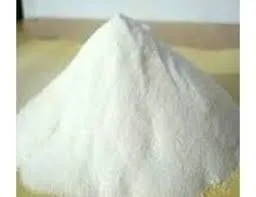
Aug . 28, 2024 16:56 Back to list
chemical structure of hpmc
Hydroxypropyl methylcellulose (HPMC) is a versatile cellulose ether that is widely used in a range of applications, particularly in pharmaceuticals, food, and construction. Understanding its chemical structure is essential to appreciating its properties and functionalities.
HPMC is derived from cellulose, the most abundant natural polymer, through a series of chemical modifications. The primary structure of HPMC consists of a linear chain of glucose residues linked by β-1,4-glycosidic bonds. These glucose units form the backbone of the molecule. The hydroxyl (-OH) groups present on the cellulose backbone are partially substituted with hydroxypropyl and methoxy groups, which impart hydrophilic and hydrophobic characteristics to the polymer.
.
One of the remarkable features of HPMC is its solubility in cold water, a property that is not common in natural cellulose. The hydroxypropyl groups enhance the solubility of HPMC by disrupting hydrogen bonding in the cellulose structure, allowing it to dissolve in aqueous solutions. This makes HPMC an ideal thickening, gelling, and film-forming agent in various formulations.
chemical structure of hpmc

In pharmaceutical applications, HPMC is commonly used as a binder in tablet formulations, a film-forming agent for coatings, and a controlled-release excipient. Its biocompatibility and ability to form stable gels make it suitable for use in drug delivery systems. In the food industry, HPMC acts as a thickener, stabilizer, and emulsifier, enhancing the texture and shelf life of products.
The construction industry also employs HPMC in cement and gypsum-based products, where it improves workability, adhesion, and water retention. Its effectiveness in modifying the rheological properties of these materials makes it a valuable additive.
In summary, the chemical structure of HPMC, characterized by its modified cellulose backbone with hydroxypropyl and methoxy substitutions, confers unique properties that make it a critical ingredient across various industries. Its versatility continues to drive research and innovation, ensuring its relevance in modern applications.
-
Versatile Hpmc Uses in Different Industries
NewsJun.19,2025
-
Redispersible Powder's Role in Enhancing Durability of Construction Products
NewsJun.19,2025
-
Hydroxyethyl Cellulose Applications Driving Green Industrial Processes
NewsJun.19,2025
-
Exploring Different Redispersible Polymer Powder
NewsJun.19,2025
-
Choosing the Right Mortar Bonding Agent
NewsJun.19,2025
-
Applications and Significance of China Hpmc in Modern Industries
NewsJun.19,2025







